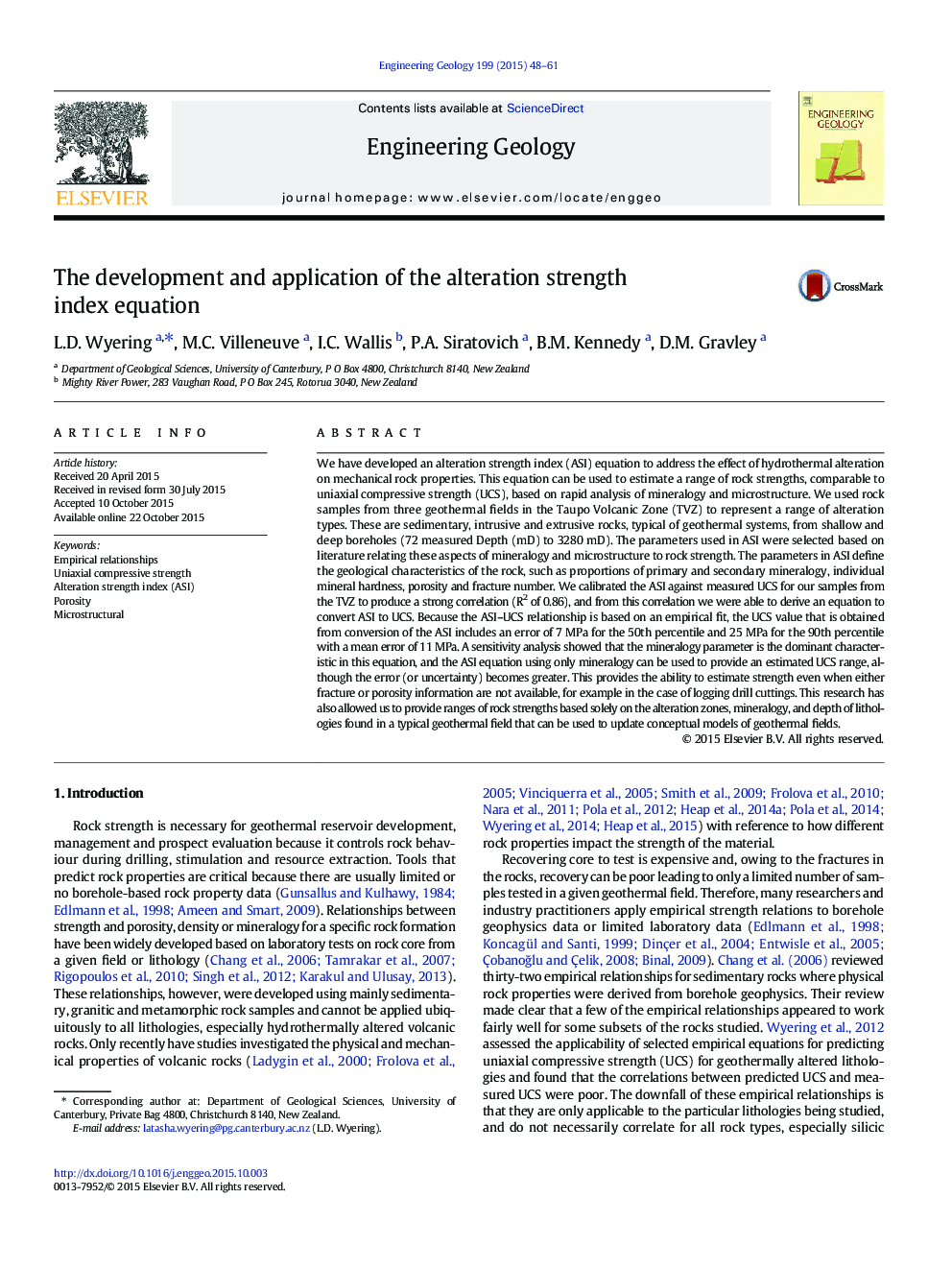| کد مقاله | کد نشریه | سال انتشار | مقاله انگلیسی | نسخه تمام متن |
|---|---|---|---|---|
| 4743234 | 1641786 | 2015 | 14 صفحه PDF | دانلود رایگان |
• ASI equation developed to estimate strength of hydrothermally altered rocks
• Mineralogy is key factor for strength of hydrothermally altered rocks.
• Pre-existing fractures and porosity also factors for strength.
• mASI can be used for rapid strength estimation using drill cuttings.
• Strength can add value to conceptual models for geothermal reservoir operation.
We have developed an alteration strength index (ASI) equation to address the effect of hydrothermal alteration on mechanical rock properties. This equation can be used to estimate a range of rock strengths, comparable to uniaxial compressive strength (UCS), based on rapid analysis of mineralogy and microstructure. We used rock samples from three geothermal fields in the Taupo Volcanic Zone (TVZ) to represent a range of alteration types. These are sedimentary, intrusive and extrusive rocks, typical of geothermal systems, from shallow and deep boreholes (72 measured Depth (mD) to 3280 mD). The parameters used in ASI were selected based on literature relating these aspects of mineralogy and microstructure to rock strength. The parameters in ASI define the geological characteristics of the rock, such as proportions of primary and secondary mineralogy, individual mineral hardness, porosity and fracture number. We calibrated the ASI against measured UCS for our samples from the TVZ to produce a strong correlation (R2 of 0.86), and from this correlation we were able to derive an equation to convert ASI to UCS. Because the ASI–UCS relationship is based on an empirical fit, the UCS value that is obtained from conversion of the ASI includes an error of 7 MPa for the 50th percentile and 25 MPa for the 90th percentile with a mean error of 11 MPa. A sensitivity analysis showed that the mineralogy parameter is the dominant characteristic in this equation, and the ASI equation using only mineralogy can be used to provide an estimated UCS range, although the error (or uncertainty) becomes greater. This provides the ability to estimate strength even when either fracture or porosity information are not available, for example in the case of logging drill cuttings. This research has also allowed us to provide ranges of rock strengths based solely on the alteration zones, mineralogy, and depth of lithologies found in a typical geothermal field that can be used to update conceptual models of geothermal fields.
Journal: Engineering Geology - Volume 199, 14 December 2015, Pages 48–61
